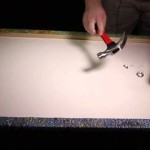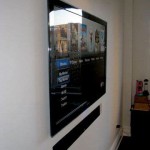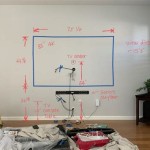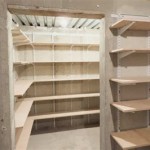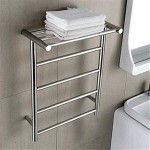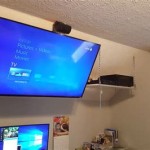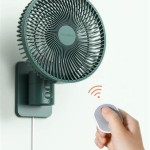Wall Mounted Shutter Exhaust Fans: A Comprehensive Overview
Wall mounted shutter exhaust fans are ventilation devices designed to remove stale air, moisture, and odors from enclosed spaces such as bathrooms, kitchens, garages, and workshops. They are characterized by a fan motor enclosed in a housing specifically designed for wall mounting, coupled with an automatic shutter mechanism that opens when the fan is operating and closes when the fan is off. This shutter mechanism plays a crucial role in preventing backdraft, outside air, and insects from entering the space when the fan is not in use. The widespread adoption of wall mounted shutter exhaust fans stems from their ease of installation, effectiveness in improving indoor air quality, and relatively low cost compared to other ventilation systems.
The functionality of these fans relies on a simple principle: the fan motor drives a propeller-like blade, creating airflow that pulls air from inside the room and expels it outdoors. The shutter, typically comprised of multiple louvers, is mechanically linked to the fan motor or airflow. When the fan is activated, the force of the air being exhausted causes the louvers to open, allowing for unimpeded airflow. Conversely, when the fan is deactivated, gravity or a spring mechanism causes the louvers to close tightly, creating a seal. This seal is crucial for preventing energy loss and maintaining a comfortable indoor environment.
The design of a wall mounted shutter exhaust fan incorporates several key components. The fan motor powers the blade, and its power and speed influence the fan's airflow capacity, typically measured in cubic feet per minute (CFM). The fan blade's design is optimized to maximize airflow while minimizing noise. The housing, usually constructed from durable materials such as plastic or metal, protects the internal components and provides a mounting surface. The shutter mechanism ensures that airflow is unidirectional, preventing outside air from entering the building when the fan is not operational. A grill or screen is typically included to prevent large objects from entering the fan and causing damage, as well as to deter birds and other animals.
Key Considerations for Selecting a Wall Mounted Shutter Exhaust Fan
Choosing the appropriate wall mounted shutter exhaust fan involves careful consideration of several factors to ensure optimal performance and longevity. These factors include the size of the room, the fan's airflow capacity, noise level, energy efficiency, and specific application requirements.
Room size is a primary determinant of the required airflow capacity. A fan with insufficient CFM for the room's volume will be ineffective in removing stale air and moisture, while an excessively powerful fan may lead to unnecessary energy consumption and noise. A general guideline is to select a fan that can exchange the air in the room multiple times per hour. For bathrooms, a common recommendation is to have a fan that can exchange the air 8 times per hour, while kitchens may require a higher exchange rate due to cooking-related odors and moisture. Online calculators and charts are available to assist in determining the appropriate CFM based on room dimensions and usage.
Noise level is another crucial consideration, particularly for installations in noise-sensitive areas such as bedrooms or living rooms. Fan noise is typically measured in sones, with lower sone ratings indicating quieter operation. A fan with a sone rating of 1.0 or less is generally considered quiet. Reputable manufacturers provide sone ratings for their fans, allowing consumers to make informed decisions based on their noise tolerance.
Energy efficiency is increasingly important due to environmental concerns and rising energy costs. Look for fans with Energy Star certification, which indicates that the fan meets specific energy efficiency standards. Energy Star certified fans typically consume less energy than non-certified models, resulting in long-term cost savings. In addition to the Energy Star rating, consider the fan's power consumption in watts. Lower wattage generally translates to lower energy bills.
Installation and Maintenance of Wall Mounted Shutter Exhaust Fans
Proper installation and regular maintenance are essential for ensuring the efficient and reliable operation of a wall mounted shutter exhaust fan. While some homeowners may opt to install the fan themselves, professional installation is recommended, particularly for complex installations or when electrical wiring is involved. Adhering to local building codes is crucial.
Installation typically involves cutting a hole in the wall to accommodate the fan housing, connecting the fan to the electrical wiring, and securing the fan to the wall. The hole should be sized appropriately to provide a snug fit for the fan housing, preventing air leakage around the edges. The electrical wiring should be performed by a qualified electrician to ensure safety and compliance with electrical codes. The fan should be securely mounted to the wall to prevent vibrations and noise.
Maintenance involves regular cleaning to remove dust and debris that can accumulate on the fan blades and housing. Dust accumulation can reduce the fan's airflow capacity and increase noise levels. The fan blades can be cleaned with a soft brush or cloth. The housing can be wiped down with a damp cloth. The shutter mechanism should also be inspected periodically to ensure that it is functioning properly and that the louvers are opening and closing freely. Lubricating the shutter mechanism with a silicone-based lubricant can help to prevent sticking and ensure smooth operation.
In addition to regular cleaning, the fan motor may require occasional lubrication. Some fan motors are sealed and do not require lubrication, while others have lubrication points that should be oiled periodically. Consult the manufacturer's instructions for specific lubrication recommendations. If the fan motor begins to make unusual noises or operate erratically, it may indicate a problem that requires professional repair or replacement.
Troubleshooting Common Issues with Wall Mounted Shutter Exhaust Fans
Despite their relatively simple design, wall mounted shutter exhaust fans can experience various issues that may affect their performance. Common problems include the fan not turning on, the fan making excessive noise, the shutter not opening or closing properly, and insufficient airflow. Troubleshooting these issues often involves a process of elimination to identify the root cause.
If the fan is not turning on, the first step is to check the power supply. Ensure that the circuit breaker is not tripped and that the electrical wiring is properly connected. Use a multimeter to test the voltage at the fan's electrical connection. If the voltage is correct, the problem may be with the fan motor itself. A faulty motor may require replacement.
Excessive noise can be caused by a variety of factors, including loose mounting hardware, unbalanced fan blades, or a worn-out motor. Tighten all mounting screws and bolts to ensure that the fan is securely attached to the wall. Inspect the fan blades for damage or debris and clean them as necessary. If the noise persists, the motor may be the source of the problem. Consider replacing the motor or the entire fan unit.
Shutter malfunctions can be caused by dirt accumulation, a broken linkage, or a weak spring. Clean the shutter mechanism thoroughly to remove any dirt or debris that may be preventing the louvers from opening or closing properly. Inspect the linkage between the fan motor and the shutter mechanism for damage. If the spring that controls the shutter is weak or broken, it may need to be replaced. In some cases, the entire shutter assembly may need to be replaced.
Insufficient airflow can be caused by a number of factors, including a clogged fan, an undersized fan, or blocked ventilation. Check the fan for obstructions and clean it thoroughly. Ensure that the fan's CFM rating is appropriate for the room size. Verify that the ventilation system is not blocked or restricted. If the problem persists, consider upgrading to a larger fan with a higher CFM rating.
By understanding the design, functionality, installation, maintenance, and troubleshooting of wall mounted shutter exhaust fans, users can ensure optimal performance and longevity of these essential ventilation devices. Regular maintenance and prompt attention to any issues can help to maintain a healthy and comfortable indoor environment.

Ventisol 18 Inch Shutter Exhaust Fan Wall Mounted Aluminum With 1 65 Meters Power Cord Kit High Speed 2500cfm Eezee

Ventisol 18 Inch Shutter Exhaust Fan Wall Mounted Aluminum With 1 65 Meters Power Cord Kit High Speed 2500cfm Eezee

Sef Shutter Mount Wall Exhaust Fans Continental Fan

Vevor 24 Shutter Exhaust Fan High Speed 3320 Cfm Aluminum Wall Mount Attic With Ac Motor Ventilation And Cooling For Greenhouses Garages Sheds S Fcc Us

Wall Mounted Shutter Fans

Kdk 20cm 25cm 30cm Wall Mounted Automatic Shutter Ventilating Exhaust Fan 20aua 25aua 30aua Upgraded Model From Auh Series Lazada
Kline 12 Inch Exhaust Fan Wall Mounted Automatic Shutter Vent High Speed 1800cfm For Garages And S Greenhouse Attic Ventilation Upgraded

Vevor 12 Shutter Exhaust Fan High Speed 1000 Cfm Aluminum Wall Mount Attic With Ac Motor Ventilation And Cooling For Greenhouses Garages Sheds S Fcc

350mm 220v 430w Square Wall Mounted Shutter Exhaust Fan Axial Made In China Com

Iliving 1736 Cfm Dc Motor Gray 16 In Wall Mounted Shutter Exhaust Fan With Temperature And Humidity Controls Variable Speed Ilg8sf16v The Home

